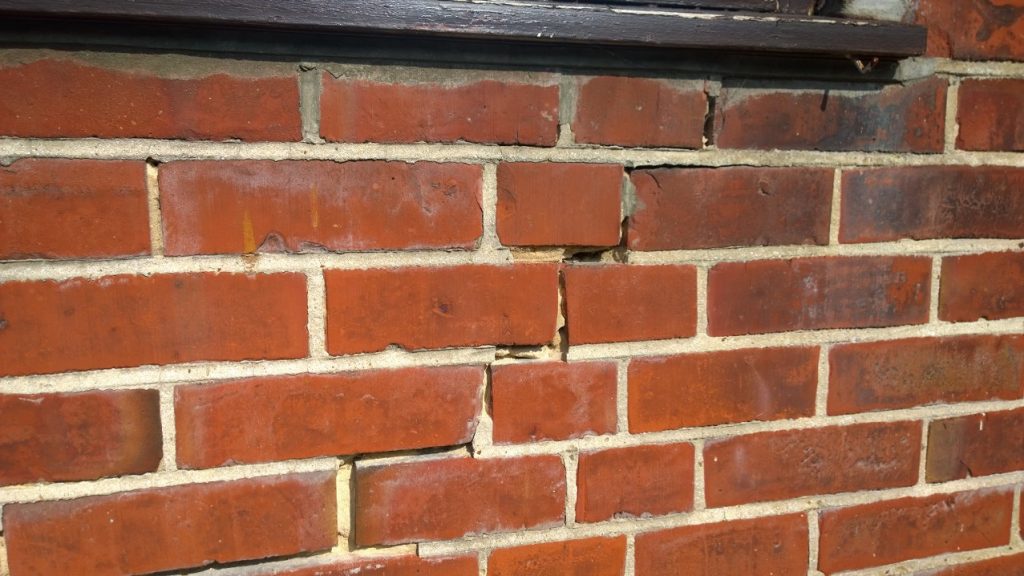News
Crack Repairs In Brick & Masonry
Crack Repairs In Brick & Masonry need to be carried out correctly to both stabilise a wall and prevent damp ingress. The key factor is understanding why a crack has opened up and what is the best repair method for fixing the cracks.
In most cases, structural defect is covered under the buildings insurance policy and you would simply call your insurer who typically would send a loss adjuster out to examine the defect and they in turn, would appoint an appropriate structural engineer or approved contractor to carry out a survey and effect the correct repair.
However, it is useful to understand the types and extent of cracks and typical repair procedures if you are either a builder or proficient DIY handy person.
The following is a very useful guide prepared by the BRE after carrying out assessments to 130 properties having suffered from structural defects brought about by subsidence:
Six categories of crack were identified, which linked the width and number of cracks to the type of repair that was appropriate.
Damage categories with descriptions of typical damage. Ease of repair in italics.
0 – Hairline cracks of less than about 0.1 mm which are classed as negligible. No action required.
1 – Fine cracks that can be treated easily using normal decoration. Damage generally restricted to internal wall finishes; cracks rarely visible in external brickwork. Typical crack widths up to 1 mm.
2 – Cracks easily filled. Recurrent cracks can be masked by suitable linings. Cracks not necessarily visible externally; some external repointing may be required to ensure weather-tightness. Doors and windows may stick slightly and require easing and adjusting. Typical crack widths up to 5 mm.
3 – Cracks that require some opening up and can be patched by a mason. Repointing of external brickwork and possibly a small amount of brickwork to be replaced. Doors and windows sticking. Service pipes may fracture. Weather-tightness often impaired. Typical crack widths are 5 to 15 mm, or several of, say, 3 mm.
4 – Extensive damage which requires breaking-out and replacing sections of walls, especially over doors and windows. Windows and door frames distorted, floor sloping noticeably. Walls leaning or bulging noticeably, some loss of bearing in beams. Service pipes disrupted. Typical crack widths are 15 to 25 mm, but also depends on number of cracks.
5 – Structural damage that requires a major repair job, involving partial or complete rebuilding. Beams lose bearing, the walls lean badly and require shoring. Windows broken with distortion. Danger of instability. Typical crack widths are greater than 25 mm, but depends on number of cracks.
Scoring the different damages in the cracks
In general, categories 0, 1 and 2 with crack widths up to 5 mm can be regarded as ‘aesthetic’ issues that require only redecoration. Categories 3 and 4 can generally be regarded as ‘serviceability’ issues, that is, they affect the weather tightness of the building and the operation of doors and windows. Category 5 presents ‘stability’ issues and is likely to require structural intervention.
Before proceeding with a repair to cracks in brick & masonry you must understand the cause for the damage. Stress and movement is usually caused by variations in moisture content in the walls, or in the ground that supports them, temperature fluctuations or chemical reactions. Some movements are cyclic and reversible, many are permanent. Where 4 & 5 above prevail with crack widths of 15mm or more, a structural engineer should be engaged to carry out a survey and provide a repair strategy specification for an approved or suitably experienced contractor to work to.
If it is certain that a crack falling under 1, 2 and 3 above are historical with no further damage anticipated or expected then the suitable remedial measure of re-pointing, grouting or helical repairs with crack stitch helical bars can be carried out.
Available here at Alliance Remedial Supplies Limited is a large range of brick and masonry crack repair products.
Our helical bar manufacturer have an excellent demonstration video we recommend is followed to carry out a correct brick and masonry helical repair:


